#blood centrifugation
Text
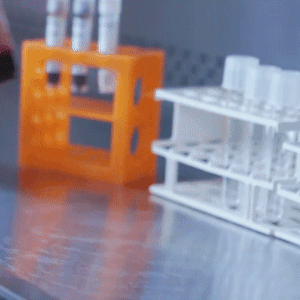
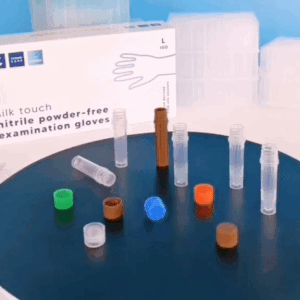

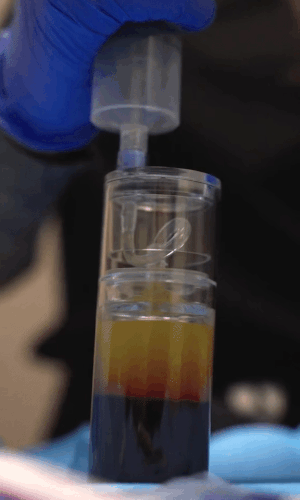
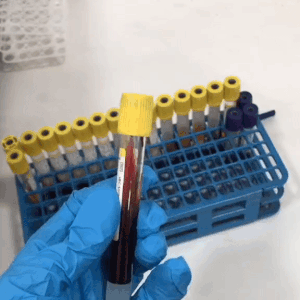
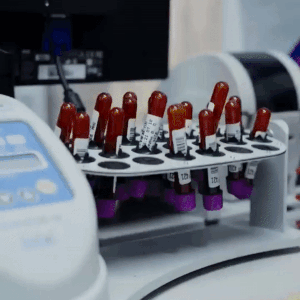
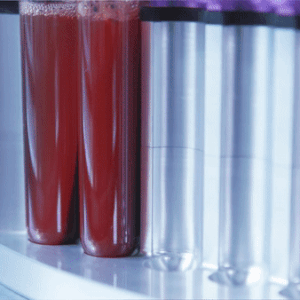

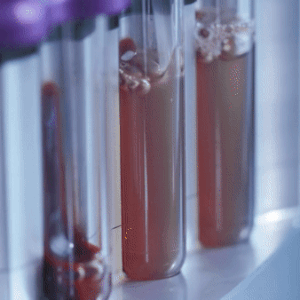
blood centrifugation
x | x | x
x | x | x
x | x | x
#talos gifs#stim gifs#stim#medical#blood#irl hands#test tubes#platelet rich plasma#blood centrifugation#centrifuge#blood fractionation#spinning#plastic#white#blue#red#orange#purple#yellow#gloved hands
162 notes
·
View notes
Text





Déjà vu-
#persona 5#persona 5 royal#p5#p5r#akira kusuru#ren amamiya#goro akechi#akeshu#shuake#tw blood#jam going ham#the engine room scene as a whole i think about constantly fhdjdjd#but engine room scene DESTROYED me like the way akechi has the softest hint of a smile as he says 'you really are...'#the desperation in his voice when he says 'you won't say no will you?"#i think about how akechi must have felt standing in front of ren and that brief second where he pointed his gun at ren#like in the interrogation room#rotating it in my brain like its a centrifuge-
426 notes
·
View notes
Text

a winning smile
#*sighs dreamily* there’s something deeply wrong with her#fhr#fallen hero#rotating book 3 villain reveal scenarios in my head like a centrifuge#sidestep#god I want it to be dramatic and MESSY especially because I went code diving and vesper’s at negative clue values for ortega n chen#complete gut punch blindside#digital art#OC vesper#blood
100 notes
·
View notes
Text

teehee
#dst#dst wilson#wilson higgsbury#dont starve#doodles#tw blood#rufdraws#i am putting him in a centrifuge rn
83 notes
·
View notes
Text
been sitting on what i think is a pretty solid theory as to what separates kin from beasts (+ what determines which one you turn into) but i genuinely don't fucking know if i can explain it in a way that makes any goddamn sense. at all.
#bloodborne#it involves the different blood colors#iosefkas blood vial#centrifuges#and neuroscience#mine
5 notes
·
View notes
Text
Number Two saying "We're good" after apologising to Rhonda
#That's it. That's the whole post.#More to come when my brain allows me to do anything other than spin that moment like a blood sample in a centrifuge#This was in the Season 1 finale (Big Day Today) by the way#the mysterious benedict society#mbs#number two#rhonda kazembe
13 notes
·
View notes
Text

Having a totally normal one
8 notes
·
View notes
Text
How do you centrifuge a blood sample?

We offer both floor-standing and under-bench models of the Blood Bag centrifuge. These centrifuges feature refrigerated systems that keep your blood bags cool during centrifugation. They may hold up to 4-750 ml blood bags for blood processing. Rotor buckets are desired oval shape to easily fit blood bags for centrifuging. Before inserting blood bags into centrifuge rotor heads, blood buckets have adapters that can be inserted into. Centrifuges can be loaded more quickly with adapters
2 notes
·
View notes
Text
the maniacal urge to tell every doctor i meet that i'm a medical student
#i don't know why i just want them to know#like i went to a dermatologist yesterday and he asked if im in college and i was like no im preparing for college#asked if im prepping for engineering and i said no it's medicine#and he was like#ooo medical field. very good#ive had way too many encounters like that#one time i went to a doc bc of a fever that wasn't getting down#he checked my temp and it said 98.6F ( which is normal body temp fyi )#and was like 'idk you tell me. do you have a fever? if not then why are you burning up'#bc he knows im a medical student#but besides these things; i just want to talk to them#i went for a blood test today and god i saw a pcr machine and god i wanted to yell ab it to her#like hear me out i know what you're doing and i'd love to talk and have to tell me stuff i want to know#despite the fact that my blood test had nothing to do w pcr but everyone knows ab hb tests and centrifugal machines#it's stupid but i love talking to ppl ab their professions esp if it's smth im into. like medicine#one time i had a rlly long discussion with an orthopedist ab bones while we were sitting next to each other on flight
4 notes
·
View notes
Text
Chat, where the FUCK is the condenser
#this is incredibly such a me problem#gale chatter#whole office freaking out looking for the condenser#what's it condense? well ill tell u! blood#yeah we take your blood & spin it in a centrifuge until it splits into a red part & a pale part#then we use the pale part to help heal the inside of ur mouth‚ using ur own body to help u post-surgery#& anyhow the condenser grabs a lil' gglob of that pale stuff & well condenses it#& one is missing lol#anyhow if any of u see the condenser (looks like a double-ended spoon but the neck is round like a pencil) lemme know k?
2 notes
·
View notes
Text
Sometimes at work I just want to pull a Clippy and be like, "it looks like you're trying to test this patient for vitamin D deficiency! I say that because the diagnosis code you used is 'Screening for Vitamin D deficiency'! But the test you asked for is Vitamin D dihydroxy (not to be used for vitamin D deficiency screening). Did you mean to ask for the much more common and less expensive test, Vitamin D 25 hydroxy, instead?"
But no, we're not supposed to fill out a follow up request if a doctor explicitly asked for the test, which they did.
Hey, this is a great example how American healthcare is wildy inefficient and riddled with errors!
#seriously sometimes I'm just like...do these doctors know what they're doing? Or even care#Like it clearly says this test is only going to give accurate results if the patient fasted first and it says here the patient didn't fast#So why are we doing this?#Did you just feel like checking boxes off on the form for extra tests would make you feel more thorough?#Best case scenario you just wasted time and resources#Worst case you get a reading that is misleading because you didn't perform the tests in the right conditions!#And then there is the doctor who keeps trying to get us to test for bacterial vaginosis from blood samples. ...#How...do you think the vaginal infection...is in her blood?#Or do you think lab tests are like palm reading or something and you can figure it out mystically from a separate bidy system?#Forget google reviews they need to develop a ranking system for doctors based on how often their paperwork gets flagged#by the laboratories for errors#Thank goodness I have insider knowledge know and the next time I pick a doctor#It'll be one whose office staff knows how to centrifuge their blood tubes properly#If your attention to detail is lacking when handling the precious sample that is blood then where else are you making mistakes?
1 note
·
View note
Text
Your Trusted Partner for Platelet-Rich Plasma Therapy Solutions
Welcome to the forefront of innovation in Platelet-Rich Plasma (PRP) therapy. At JUVA PRP, we're committed to revolutionizing the field of regenerative aesthetics with our customizable solutions tailored for practitioners in the USA.
#platelet rich plasma preparation kit#platelet rich plasma centrifuge machine#centrifuge machine for prp#best prp centrifuge machine#platelet rich plasma extraction kit#centrifuge blood plasma separation#blood plasma separation machine
0 notes
Text
Cell Washing Centrifuge

A cell washing centrifuge is a specialized centrifuge used in biological and medical laboratories for the purpose of washing cells. Cells need to be washed in various experimental procedures to remove contaminants, residual media, or unwanted substances before further analysis or experimentation.Cell washing centrifuges are crucial tools in various fields such as cell biology, immunology, and molecular biology.Some advanced models may offer programmable settings for precise control over centrifugation parameters.
0 notes
Text
Packed Cell Volume (PCV) Test: A Crucial Component in Blood Analysis
The Packed Cell Volume (PCV) test, also known as hematocrit, is a fundamental diagnostic tool used in clinical medicine to assess a patient's blood volume and the concentration of red blood cells (RBCs) within it. This test provides valuable insights into a patient's health status and aids healthcare providers in diagnosing various medical conditions. In this article, we will delve into the importance, procedure, and interpretation of the PCV test.
Importance of PCV Test:
The Packed Cell Volume (PCV) test, is crucial for evaluating an individual's hematological status. Hematocrit levels indicate the proportion of red blood cells in the total blood volume. Understanding the PCV is essential because:
1. Assessment of Anemia:
Anemia, a condition characterized by a deficiency of red blood cells or hemoglobin, can be detected through low PCV levels. By measuring PCV, healthcare professionals can identify anemia and its underlying causes, such as nutritional deficiencies, chronic diseases, or blood loss.
2. Monitoring Blood Disorders:
PCV levels are monitored in patients with blood disorders like polycythemia vera, a condition characterized by an excess of red blood cells. Abnormal PCV levels may indicate the need for further investigation and management of such conditions.
3. Evaluation of Dehydration:
In cases of dehydration, the blood becomes more concentrated due to the loss of plasma volume. Consequently, PCV levels rise as a compensatory mechanism. Monitoring PCV levels can aid in assessing dehydration severity and guiding fluid replacement therapy.
Procedure of PCV Test:
The PCV test is relatively simple and is often performed as part of a complete blood count (CBC). Here's how it's done:
1. Blood Collection:
A small sample of blood is typically collected from a vein in the arm using a sterile needle and syringe or a vacutainer system.
2. Centrifugation:
The collected blood is transferred into a specialized tube called a hematocrit tube or capillary tube. The tube is then placed in a centrifuge, where it spins at high speeds for a few minutes.
3. Separation of Components:
Centrifugation causes the blood components to separate based on their density. Red blood cells, being denser, settle at the bottom of the tube, while plasma rises to the top.
4. Measurement:
After centrifugation, the PCV is determined by measuring the height of the packed red blood cells relative to the total height of the blood column in the tube.
Interpretation of PCV Test Results:
Interpretation of PCV levels depends on various factors such as age, sex, altitude, and individual health conditions. Generally, normal PCV levels range from:
- Adult males: 40% to 54%
- Adult females: 37% to 47%
- Children: 35% to 49%
Abnormal PCV levels may indicate underlying health issues:
- Low PCV (Anemia):
Indicates conditions such as iron deficiency anemia, vitamin B12 deficiency, chronic disease, or blood loss.
- High PCV (Polycythemia):
May suggest dehydration, lung disease, chronic kidney disease, or bone marrow disorders like polycythemia vera.
It's important to note that PCV levels are often interpreted alongside other blood parameters and clinical findings to arrive at a comprehensive diagnosis.
Conclusion:
The Packed Cell Volume (PCV) test is a valuable diagnostic tool in clinical medicine, providing insights into a patient's hematological status. By assessing the proportion of red blood cells in the blood volume, healthcare professional doctors can diagnose and monitor various medical conditions, including anemia, dehydration, and blood disorders. Understanding the procedure and interpretation of PCV test results is essential for delivering effective patient care and managing hematological disorders effectively.
0 notes
Text
The Centrifugal Blood Pump Market in 2023 is US$ 0.12 billion, and is expected to reach US$ 0.17 billion by 2031 at a CAGR of 4.2%.
FutureWise Research published a report that analyzes Centrifugal Blood Pump Market trends to predict the market's growth. The report begins with a description of the business environment and explains the commercial summary of the chain structure. Based on the market trends and driving factors presented in the report, clients will be able to plan the roadmap for their products and services taking into account various socio-economic factors.
#Centrifugal Blood Pump Market Scope#Centrifugal Blood Pump Market Share#Centrifugal Blood Pump Market Size
0 notes
Text
Blood Card Centrifuge
The Blood Card Centrifuge is a compact and specialized medical device designed for the rapid and efficient separation of blood components. It consists of a sturdy base with a motorized rotor capable of spinning at high speeds.

0 notes